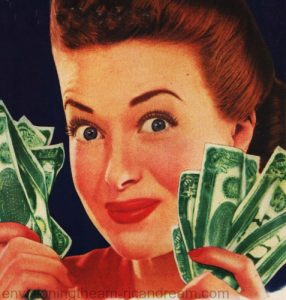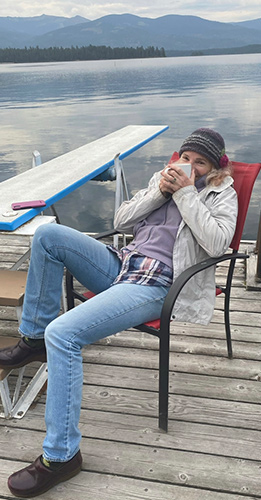In a previous blog post bemoaning the difficulty of good follow-up in clinical research I sort of place most of the blame on patients who blow off the follow-up once they have their desired implants. This was my experience with the implant study I participated in many years ago. I had an 80% follow-up at 5 years (which was really, really high) mostly because I pestered patients relentlessly to come back for their follow-up exams. I have taken a bit of flack (especially from the breast implant illness activists) for my blame-the-patient stance but now there is a recent study out that supports my politically incorrect opinion. Check this out. It seems if you pay the patient big bucks to show up they do! This study has an astounding 94.9% and 96.7% follow-up compliance at 5 years. The study has another 5 years to go and my guess is that given the size of the monetary award, those numbers will also be very high.

“Maybe I will show up for my follow-up.”
Novel Approach for Maximizing Follow-Up in Cosmetic Surgery Clinical Trials: The Ideal Implant Core Trial Experience
Methods: At enrollment, $3500 was deposited into an independent, irrevocable trust for each of the 502 subjects and invested in a diversified portfolio. If a follow-up visit is missed, the subject is exited from the study and compensated for completed visits, but the remainder of her share of the funds stay in the trust. At the conclusion of the 10-year study, the trust will be divided among those subjects who completed all required follow-up visits. For primary and revision augmentation cohorts, the U.S. Food and Drug Administration published follow-up rates from Core Studies were compared for all currently available breast implants.
Results: Five-year follow-up rates for the IDEAL IMPLANT Core Study are higher for both primary augmentation and revision augmentation cohorts (94.9 percent and 96.7 percent, respectively) when compared to all other trials that have used U.S. Food and Drug Administration standardized follow-up reporting (MemoryShape, Allergan 410, and Sientra Core Studies).
Conclusions: This trial demonstrates the utility of a novel incentive strategy to maximize follow-up in cosmetic surgery patients. This strategy may benefit future cosmetic surgery trials and perhaps any prospective research trial by providing more complete data.
CLINICAL QUESTION/LEVEL OF EVIDENCE: Therapeutic, IV.
Hey, thanks for reading and I really thank Drs. Mueller, Nichter and Hamas for this awesome article. And my hat is really off to Dr. Robert Hamas who not only thought up the idea of the Ideal implant but actually brought it to market. And Ideal only sells its implants to surgeons certified by the American Board of Plastic Surgery. That means if your surgeon is using an Ideal implant, he/she is actually a real honest to goodness plastic surgeon, not just poseur.
And I would be honored if you followed me on Instagram @sowdermd and @breastimplantsanity. Dr. Lisa Lynn Sowder



 @lisalynnsowder
@lisalynnsowder
